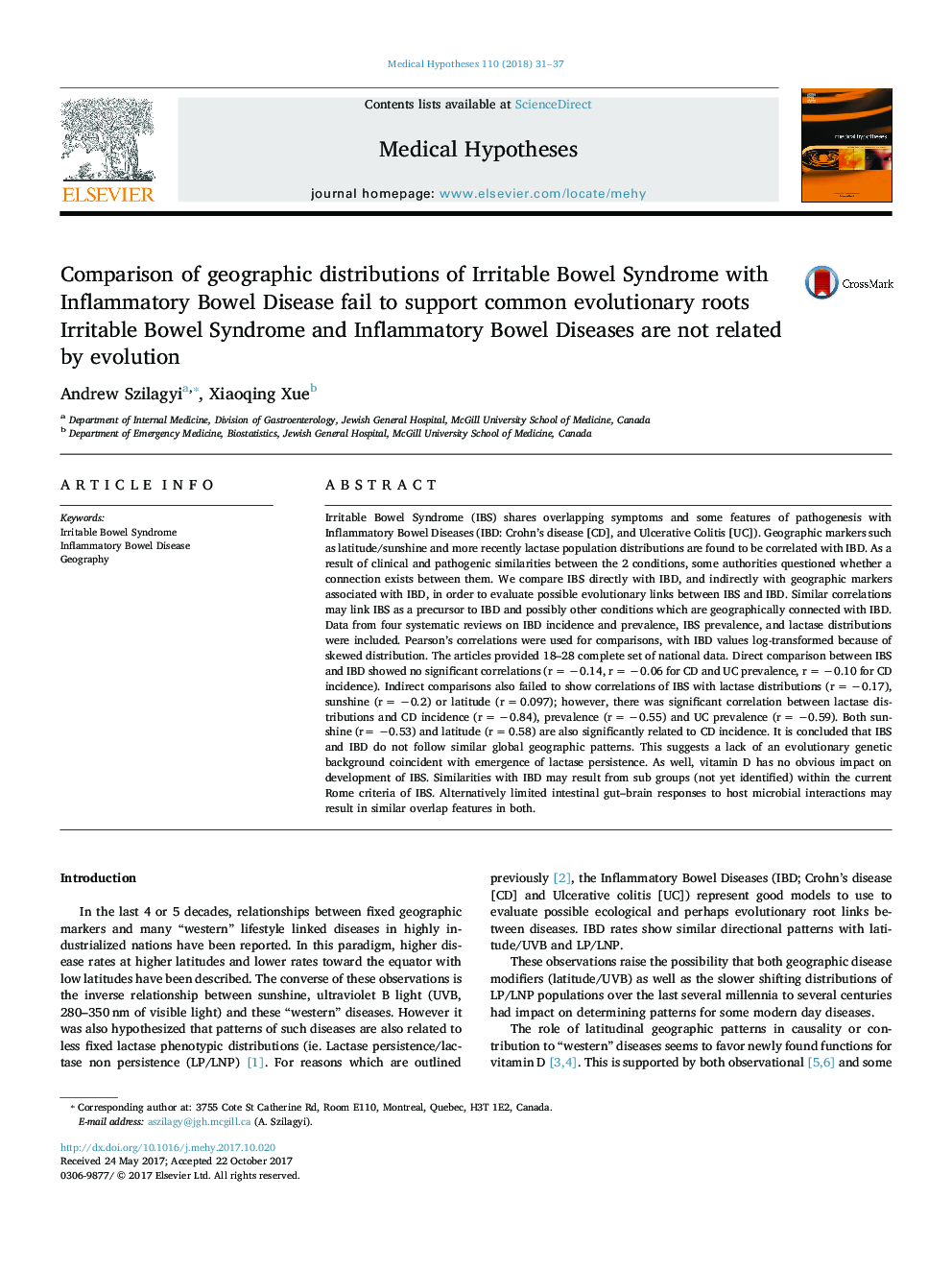| کد مقاله | کد نشریه | سال انتشار | مقاله انگلیسی | نسخه تمام متن |
|---|---|---|---|---|
| 8516076 | 1556535 | 2018 | 7 صفحه PDF | دانلود رایگان |
عنوان انگلیسی مقاله ISI
Comparison of geographic distributions of Irritable Bowel Syndrome with Inflammatory Bowel Disease fail to support common evolutionary roots
ترجمه فارسی عنوان
مقایسه توزیع جغرافیایی سندرم روده تحریک پذیر با بیماری رودهای التهابی قادر به پشتیبانی از ریشه های تکاملی رایج
دانلود مقاله + سفارش ترجمه
دانلود مقاله ISI انگلیسی
رایگان برای ایرانیان
کلمات کلیدی
سندرم روده تحریک پذیر، بیماری روده التهابی جغرافیا،
موضوعات مرتبط
علوم زیستی و بیوفناوری
بیوشیمی، ژنتیک و زیست شناسی مولکولی
زیست شناسی تکاملی
چکیده انگلیسی
Irritable Bowel Syndrome (IBS) shares overlapping symptoms and some features of pathogenesis with Inflammatory Bowel Diseases (IBD: Crohn's disease [CD], and Ulcerative Colitis [UC]). Geographic markers such as latitude/sunshine and more recently lactase population distributions are found to be correlated with IBD. As a result of clinical and pathogenic similarities between the 2 conditions, some authorities questioned whether a connection exists between them. We compare IBS directly with IBD, and indirectly with geographic markers associated with IBD, in order to evaluate possible evolutionary links between IBS and IBD. Similar correlations may link IBS as a precursor to IBD and possibly other conditions which are geographically connected with IBD. Data from four systematic reviews on IBD incidence and prevalence, IBS prevalence, and lactase distributions were included. Pearson's correlations were used for comparisons, with IBD values log-transformed because of skewed distribution. The articles provided 18-28 complete set of national data. Direct comparison between IBS and IBD showed no significant correlations (râ¯=â¯â0.14, râ¯=â¯â0.06 for CD and UC prevalence, râ¯=â¯â0.10 for CD incidence). Indirect comparisons also failed to show correlations of IBS with lactase distributions (râ¯=â¯â0.17), sunshine (râ¯=â¯â0.2) or latitude (râ¯=â¯0.097); however, there was significant correlation between lactase distributions and CD incidence (râ¯=â¯â0.84), prevalence (râ¯=â¯â0.55) and UC prevalence (râ¯=â¯â0.59). Both sunshine (r=â¯â0.53) and latitude (râ¯=â¯0.58) are also significantly related to CD incidence. It is concluded that IBS and IBD do not follow similar global geographic patterns. This suggests a lack of an evolutionary genetic background coincident with emergence of lactase persistence. As well, vitamin D has no obvious impact on development of IBS. Similarities with IBD may result from sub groups (not yet identified) within the current Rome criteria of IBS. Alternatively limited intestinal gut-brain responses to host microbial interactions may result in similar overlap features in both.
ناشر
Database: Elsevier - ScienceDirect (ساینس دایرکت)
Journal: Medical Hypotheses - Volume 110, January 2018, Pages 31-37
Journal: Medical Hypotheses - Volume 110, January 2018, Pages 31-37
نویسندگان
Andrew Szilagyi, Xiaoqing Xue,
